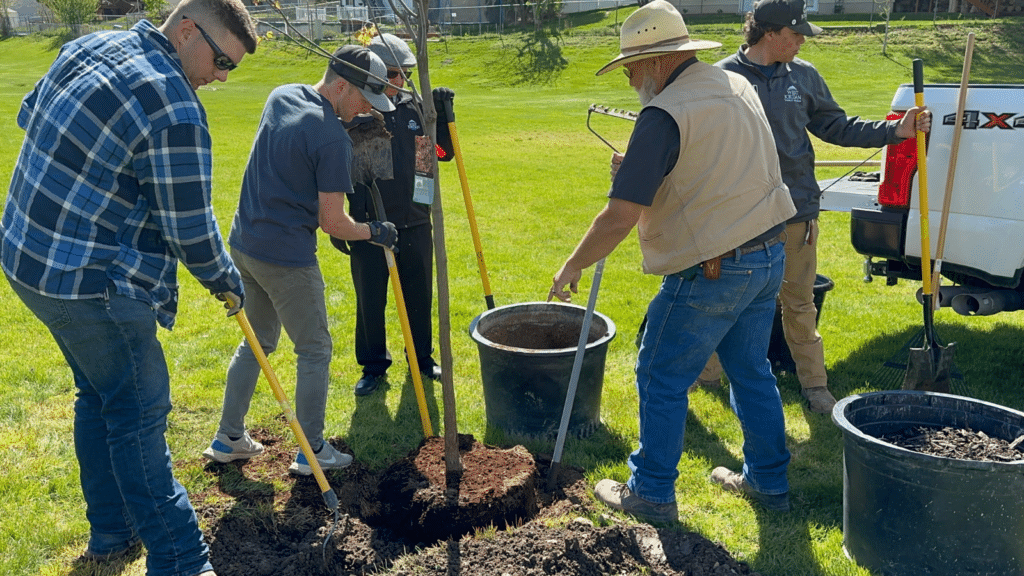The Best Time to Plant a Tree is Now!

Want new trees in your yard? Don’t wait until spring! When the weather is cooler trees can focus on strengthening their roots. Unlike grass, tree roots do not hibernate for the winter. Fall planting gives them time to adjust to the shock of transplanting and strengthen their root system. In the spring, trees produce leaves and demand more water – New trees struggle in the heat of the summer.
What to look for when choosing a tree:
- A root flare, where trunk and root meet, and is slightly wider than the trunk – this helps prevent you from planting too deep.
- Strong central leader pointing straight up – you’ll need to prune back competitors.
- Signs of bugs – avoid infested trees.
- Damage to the trunk and branches – these open wounds may make survival a struggle.
- Roots growing inwards or around the trunk of the tree – these will need to be trimmed so it doesn’t strangle itself.
How to prepare the tree:
- Tap or squeeze the plastic container to loosen the dirt. Or, if it is wrapped, remove all the wrapping and strings.
- Gently tip the tree on its side and pull off the container.
- Clip the roots around the whole outside of the dirt ball. A root will continue to grow in one direction, so a spiral root will continue to spiral and won’t spread out. Clipping the roots allows them to grow outward.
How to put the tree in the ground.
- Dig the hole as deep and wide as the root ball.
- The top of the root flare needs to be at or slightly above ground level.
- As you replace the dirt around the new tree, compact it around the base (no more than half of the root ball), to help stabilize the trunk. Keep the rest fluffy so water and air can move in and around.
- Tree stakes can be helpful, but only attach them with rubber strap loops that allow the tree to feel the wind. The tree needs to be firmly planted so it won’t tip, but needs some flexibility to sway slightly with the wind. This helps train the tree to know how to prepare itself for future storms.
- Grass and trees are worse enemies than cats and dogs! Keep a minimum 24-inch wide circle around the trunk free of grass, weeds and other plants. They’ll compete for water and nutrition, and the tree might lose!
- There are two ways to prevent grass from getting too close:
- Purchase wood chips or mulch and cover the bare area around the trunk.
- Fallen leaves or grass clippings act as great protection and will add nutrients to the ground as they decompose. Instead of throwing away all your fall leaves, leave them around the base of your tree for a free, easy mulch.
- There are two ways to prevent grass from getting too close:
How to water:
- Water trees year round. Trees need their own water program aside from the grass. They need a lot more water.
- If we have a dry winter and the soil is fluffy and dry, you need to water your tree. Grass can go dormant, your tree cannot. (and shrubs) check them every other week.
How to prune:
- When the leaves are gone, it’s the best time to do structural pruning. It’s not the only time to prune, but it is the best time because you can see the structure.
- Pruning is either removal, or reduction:
- Make a central leader that aims straight up and is the tallest part of the tree
- Trim away branches that grow inwards.
- Remove dead and broken branches.


